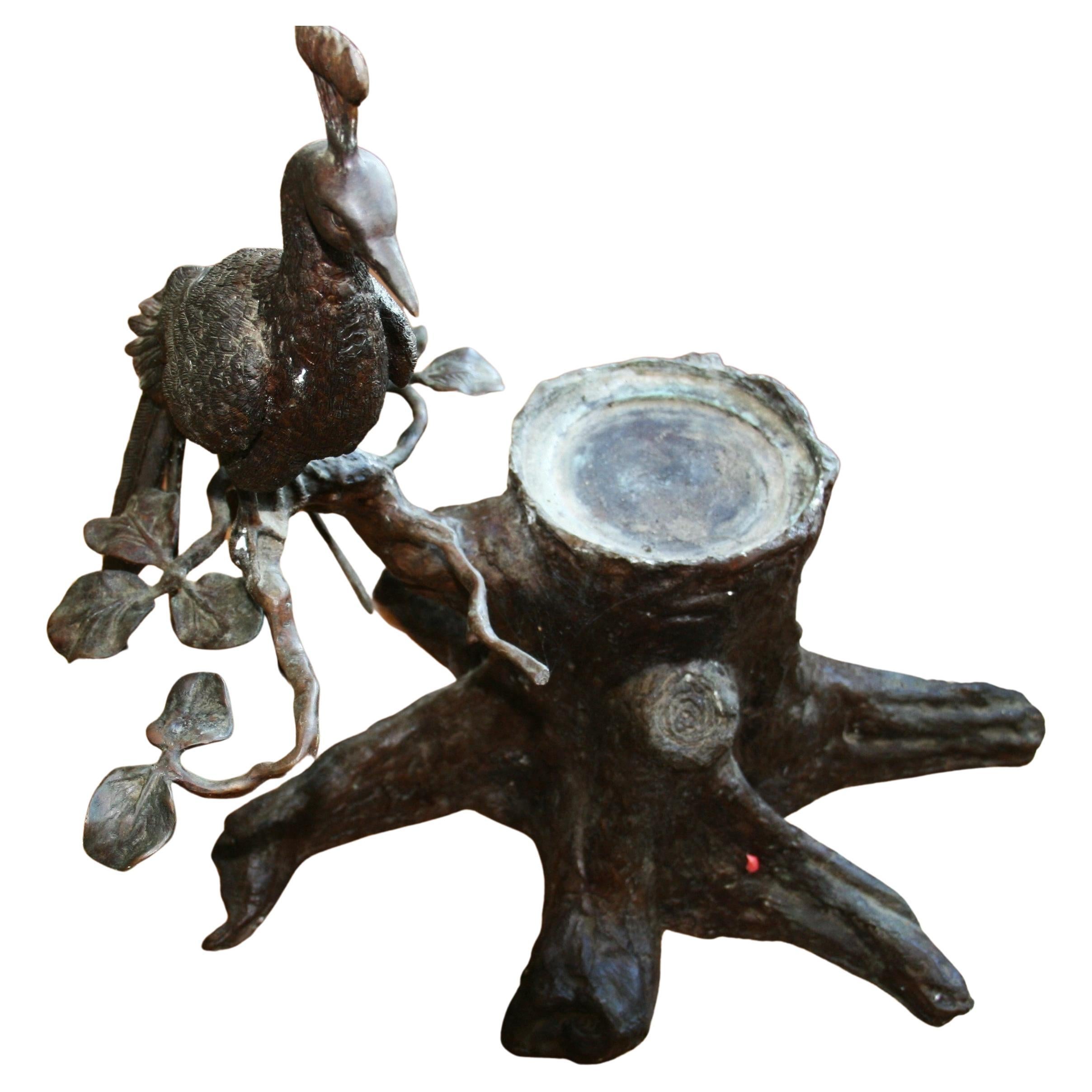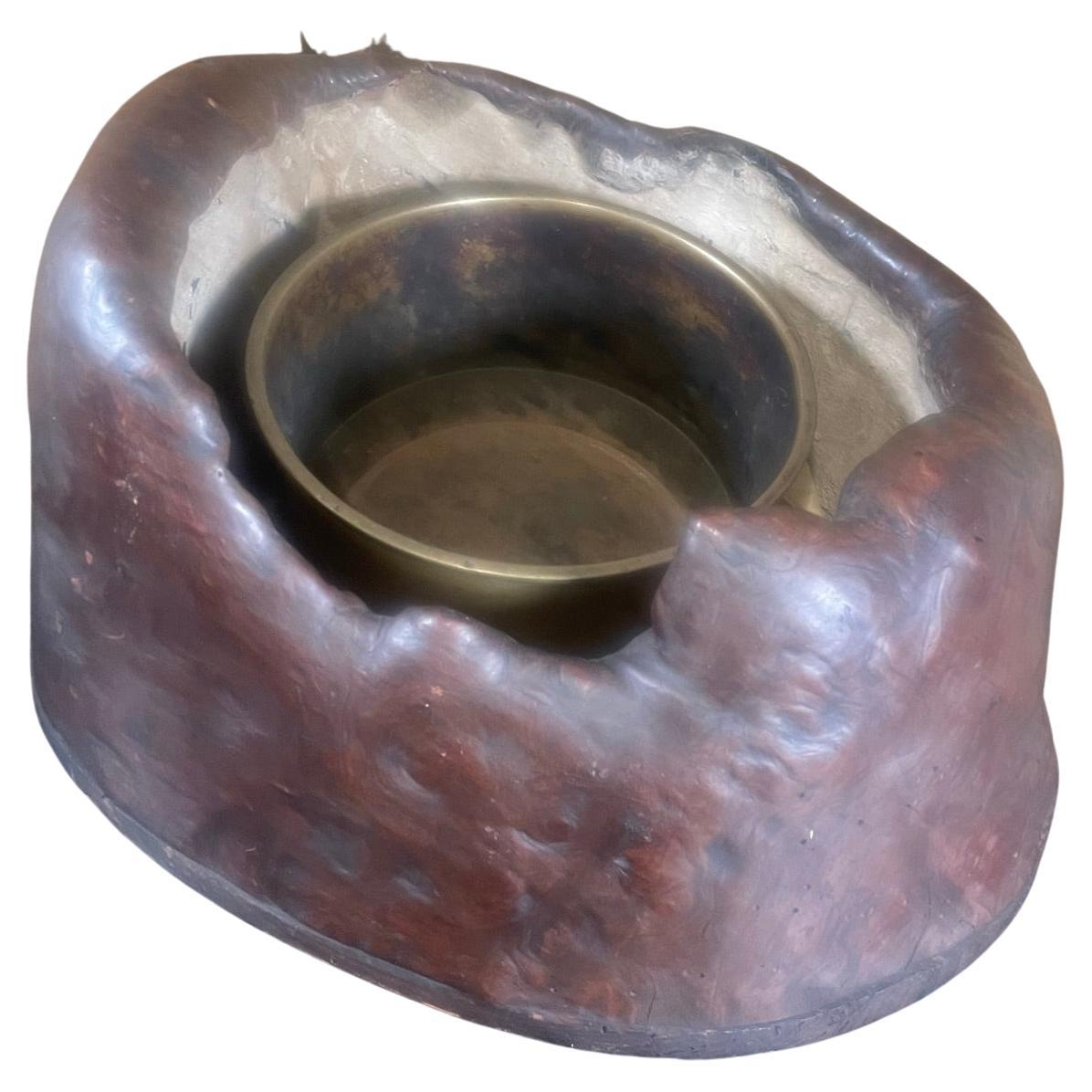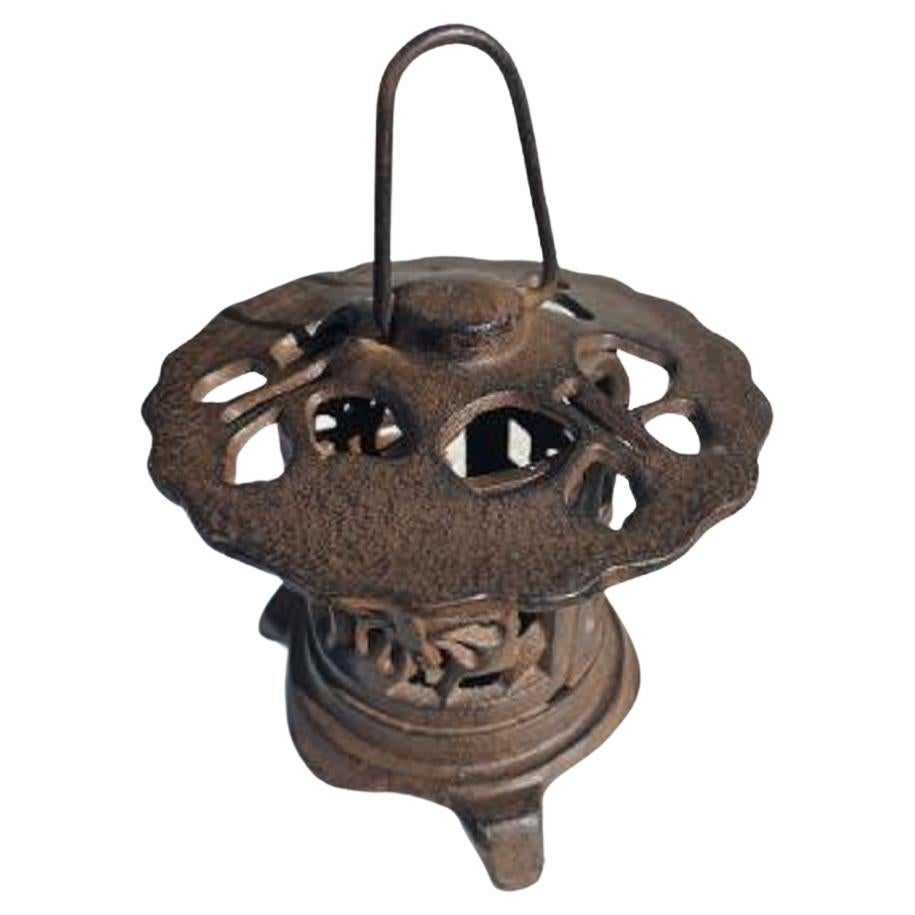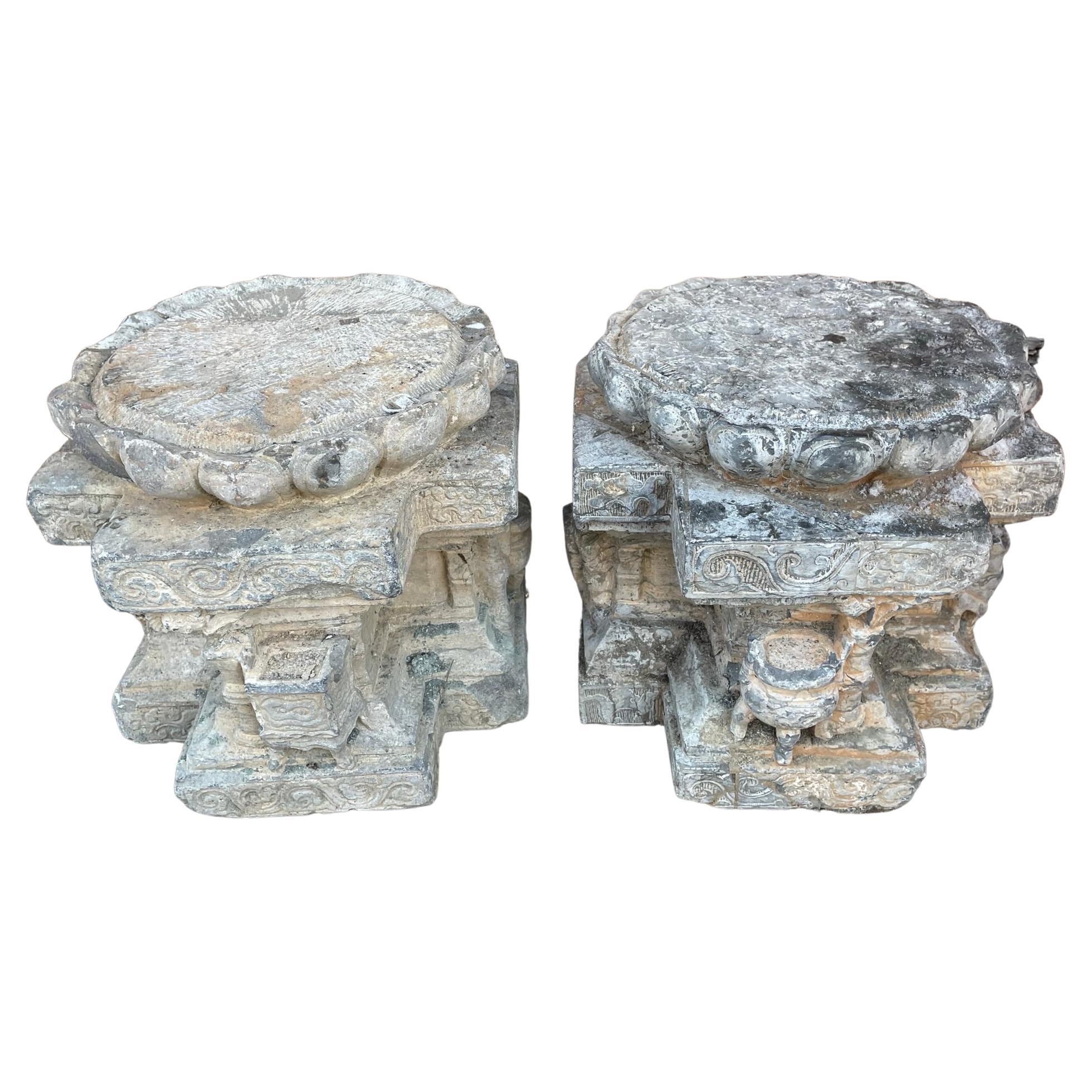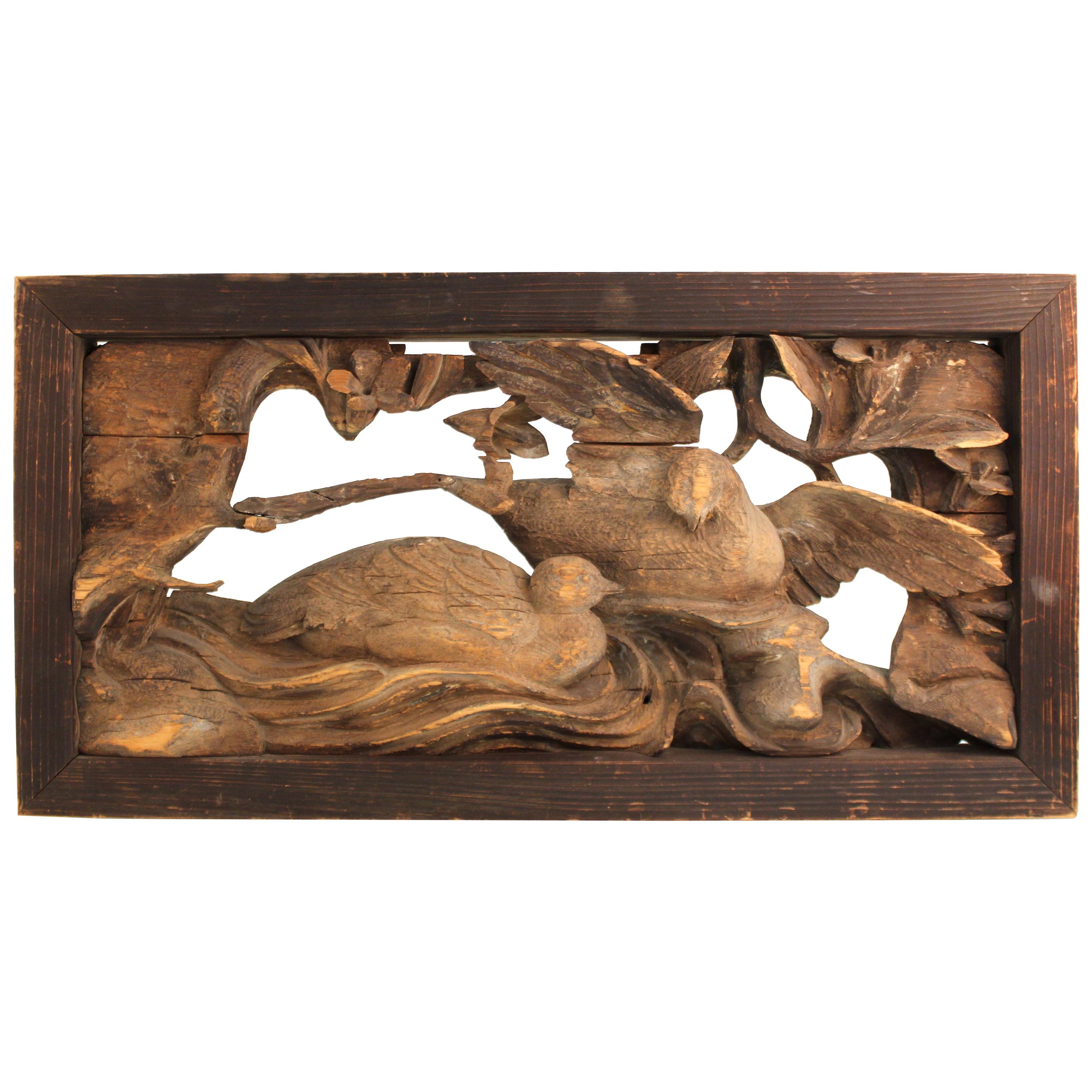Items Similar to Japanese Fine Antique Gilt and Red Lacquer Lotus Bud Flower, Edo Period 19th C
Video Loading
Want more images or videos?
Request additional images or videos from the seller
1 of 16
Japanese Fine Antique Gilt and Red Lacquer Lotus Bud Flower, Edo Period 19th C
About the Item
From our recent Japanese acquisitions, a rare find
Antique Original Japanese temple "blossoming lotus" flower bud stem including its original red lacquer display base. This finely hand carved wood and lacquered gold flower stem was made for a Buddhist 19th century temple altar. Its flower blossoms and leaves symbolize the stages of the path toward enlightenment. The individual parts of each lotus is carved separately then joined in an arrangement and inserted in altar vessels.
Also called "Jyôka" , it is placed on or next to an altar in a Buddhist temple. Made with meticulous techniques. In Buddhism, the lotus is an important symbol of divine enlightenment because it blooms into beautiful flowers while growing in mud. Tsunehana means "a flower that continues to bloom forever" and "a flower that does not wither." For this reason, the flowers represented are in different stages of their life, unfolded lotus leaves, buds and full flowers, thus symbolizing the journey towards Buddhist enlightenment.
This lovely Japanese antique gilt Lotus flower is an early survivor, circa 1840, and a hard to find treasure that was originally placed on or around a temple altar.
This ensemble consists of a single stem, the top most flower, and the bottom leaf- all mounted in the original square red lacquer display base. A gold gilt 3.5 inch long tortoise "minogame" is affixed to the base as seen in the photo.
Its attractive original old patina coupled with much of the original gilding remaining present is just the way we like to find them.
Dimensions: With original red lacquer display stand Height, 17 inches height and 9 inches in width. The lotus flower stem alone measures 16 inches in height.
Provenance: acquired from a Kyoto Japanse monk and collector
History of the Japanese turtle "minogame"
One of the most famous is the mythological giant turtle known as the minogame (??, or 'straw raincoat-turtle' due to the tail resembling a farmer's straw coat). The minogame is regarded as a very auspicious creature in Japanese culture and has made appearances in arts, crafts, and even in modern-day popular culture and is said to live at least a thousand years and have a long, hairy tail, which is actually seaweed and algae that have grown on its shell due to its ripe old age
Lifetime authenticity guarantee.
- Dimensions:Height: 17 in (43.18 cm)Width: 9 in (22.86 cm)Depth: 6.5 in (16.51 cm)
- Style:Edo (Of the Period)
- Materials and Techniques:
- Place of Origin:
- Period:
- Date of Manufacture:1840
- Condition:Wear consistent with age and use.
- Seller Location:South Burlington, VT
- Reference Number:1stDibs: LU1289233870662
About the Seller
5.0
Gold Seller
These expertly vetted sellers are highly rated and consistently exceed customer expectations.
Established in 1990
1stDibs seller since 2015
2,216 sales on 1stDibs
Typical response time: 1 hour
- ShippingRetrieving quote...Ships From: South Burlington, VT
- Return PolicyA return for this item may be initiated within 7 days of delivery.
More From This SellerView All
- Japanese Fine Antique Gilt Lotus Bud Flower, Edo Period 19th CenturyLocated in South Burlington, VTFrom our recent Japanese acquisitions, a rare find, stem #3 Antique Original Japanese temple "blossominig lotus" flower bud stem. This finely hand carved wood and lacquered gold flower stem was made for a Buddhist 19th century temple altar...Category
Antique 1840s Japanese Edo Sculptures and Carvings
MaterialsWood
- Japanese Fine Gilt Double Bouquet Lotus FlowersLocated in South Burlington, VTFrom our recent Japanese acquisitions Original Japanese temple "blossoming lotus" flower bud stems form an attractive double bouquet. Made for a shrine altar, these flower blossoms and leaves symbolize the stages of the path toward enlightenment. The individual parts of each lotus is assembled and then joined in an arrangement of two stems and two bouquets and inserted into the vessel. Called "Jyôka" and they are placed on or next to an altar in a Buddhist temple. In Buddhism, the lotus is an important symbol of divine enlightenment because it blooms into beautiful flowers while growing in mud. Tsunehana means "a flower that continues to bloom forever" and "a flower that does not wither." For this reason, the flowers represented are in different stages of their life, unfolded lotus leaves, buds and full flowers, thus symbolizing the journey towards Buddhist enlightenment. This lovely Japanese gilt Lotus...Category
Mid-20th Century Japanese Showa Sculptures and Carvings
MaterialsBronze
- Japan Large Antique Unique 19th Century Natural Burl Wood PlanterLocated in South Burlington, VTRemarklable natural burl wood planter sculpture - Lovely to Touch, Feel, and Hold in your hands From Japan comes this unique and attractive example of a natural organic burl wood sculpture in the form of a planter. It proudly shows its good age boasting a wonderful smooth dark surface patina from decades of prior ownership. This stunning single root sculpture is a natural root wood burl . Displays flat on any surface making an impressive presentation. Includes original brass insert as collected. Dimensions: 15 inches in length and 8 inches high. Would make a special display work of art for your home, office, or private gallery space. One-of-a-kind. This is an exceptional one-of-a-kind example. Provenance: Kyoto, Japanese collection. Lifetime guarantee of authenticity: All of our Asian works of art come with our Lifetime Authenticity Guarantee. About Japanese turtles...Category
Antique 19th Century Japanese Meiji Planters and Jardinieres
MaterialsWood
- Japanese Antique Petite Butterfly Flower Lighting LanternLocated in South Burlington, VTAn unusual hard to find size and scale -and a beautiful design of butterflies galore. Japan, this handsome heavy hand cast quality old round "Petite Yukimi" motif tea garden lante...Category
20th Century Japanese Showa Planters and Jardinieres
MaterialsIron
- Japanese Antique Gourd and Eggplant VaseLocated in South Burlington, VTAnother Gem Japan, a fine substantial 11" tall antique monumental green and blue gourd shaped vase with unusual blue egg plant decoration glazed in rich deep green, blue, and brown colored crackled drip glazes. It was crafted by the master artisans of the Japanese southern Awaji Kiln, from the late Meiji to Taisho period (1910s-1920s). The impressive porcelain vase crafted in a classic wabi sabi modernist form with an original multi glazed finish. It is unsigned as many normally were from that period and is in original condition with normal kiln origination surface creation imperfections on bottom. Dimensions: 11 inches tall and 5.5 inches diameter.. Provenance: private north west coast collection. Undoubtedly influenced by the modernist movement and more likely by the visit to the Awaji kilns by the noted English designer Christopher Dresser of Linthorpe Art Pottery...Category
Early 20th Century Japanese Taisho Sculptures and Carvings
MaterialsCeramic, Pottery
- China Pair Antique Hand Carved Stone Pedestals 19th CenturyLocated in South Burlington, VTHard to Find Pair from the 19th Century From China's Qing dynasty (1644-1912) a hard to find pair (2) of limestone finely carved pedestals - perfect for displaying your indoor or o...Category
Antique 19th Century Chinese Qing Sculptures and Carvings
MaterialsStone, Limestone
You May Also Like
- Japanese Peacock Brass and Stoneware Planter 19th CenturyLocated in Douglas Manor, NY1313 Japanese peacock brass planter with stoneware vase.Category
Antique 1890s Planters and Jardinieres
MaterialsBrass
- Japanese Edo Period Wood Temple Carving with DovesLocated in New York, NYJapanese Edo period wooden temple carving with two doves in branches. The scene is set into a frame that suggests the piece having been initially part o...Category
Antique 17th Century Japanese Edo Sculptures and Carvings
MaterialsWood
- Antique Large Fine Quality Oriental Japanese 19th Century Meiji Period Bronze BoLocated in Wisbech, CambridgeshireAntique large fine quality Oriental Japanese bronze Jardinière planter bowl censor Meiji Period 19th Century. Would look amazing in the right location and make a fabulous centre p...Category
Antique 19th Century Planters, Cachepots and Jardinières
MaterialsBronze
- Fine Quality Large Japanese Bronze Jardinière Planter Pot - Meiji Period, 19th CLocated in Wisbech, CambridgeshireAntique Oriental Japanese Bronze Jardinière Planter Bowl Censor - Exquisite Meiji Period Piece! This exceptional bronze jardinière planter bowl, hailing from the 19th Century Meiji ...Category
Antique 19th Century Japanese Planters and Jardinieres
MaterialsBronze
- Japanese Bronze Jardinière Planter Bowl Pot- 19th Century Meiji Period, AntiqueLocated in Wisbech, CambridgeshireAntique Large Oriental Japanese Bronze Jardinière Planter Bowl Censor - Exquisite Meiji Period Piece! This stunning bronze jardinière planter bowl, originating from the 19th Century...Category
Antique 19th Century Japanese Planters and Jardinieres
MaterialsBronze
- Antique large fine quality Oriental Japanese 19th Century bronze Jardinière bowlLocated in Wisbech, CambridgeshireAntique large fine quality Oriental Japanese bronze Jardinière planter bowl censor Meiji Period 19th Century. Would look amazing in the right location and make a fabulous centre pie...Category
Antique 19th Century Planters, Cachepots and Jardinières
MaterialsBronze
